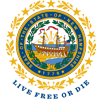In the News
Contact
Applying lessons of remote instruction when we go back to school

I recently spoke to a pair of high school juniors with very different perspectives on remote instruction.
Leslie (not her real name) was committed to keeping a strict schedule when schools shifted to remote instruction in April. Her pre-COVID routine included getting up early, focusing on class until 2:30, and a full load of extracurricular activities until 6:00 p.m. She also found time to socialize with friends.
Remote instruction has been really hard on Leslie. She misses her friends and her extracurricular programs.
"The instruction is OK, but I miss my friends and my sports," she told me.
She cannot wait to get back to her routine and life before it was disrupted.
The switch to remote instruction caught Melody (also not her real name) by surprise. She does not engage in extracurricular activities, and has an after-school job at a local pizza place. She has not been particularly interested classroom instruction, finding it tiresome to repeatedly go over material when she was ready to move on. She would lose interest and mentally check out in class.
Remote instruction was another thing altogether. Melody is now engaging the material on her own terms.
She says it's going rreally well. I get to set my own pace. If I need to re-review something, I can. If I want to move on, I can. If I need to get up and get a snack, I can, but the teachers would not let me do that. I can finish my work faster if I want and have more time for myself during the day and before I go to work."
Melody does miss her friends, but they still stop by the pizza restaurant for takeout, where they arrange online hangouts. Melody's GPA has gone up.
For well over a decade, New Hampshire's central education philosophy is that students learn differently. We need an education system that recognizes that. Personalized learning recognizes that students are not cogs in some elaborate machinery, but inherently curious learners full of potential. The role of education is not to fill them up with information, but to draw out of them all that they can be.
With this academic year almost over, we're already planning for the fall, and a new meaning of "back to school." We need to learn what this period of remote instruction has to teach us.
As we work to get things back to normal, it would be very easy imagine that the pre-COVID-19 instructional model functioned without any downside, while we know this to not always be the case. Two areas where this is particularly illustrated is with respect to student academic attainment and student social-emotional wellness.
Student assessment results reveal that many students do not reach proficiency targets we have for them. This is particularly true for economically-disadvantaged students, minority and English language learners, and students with individual education plans. While it is appropriate that we consider learning gaps for students that may have manifest as a result of COVID-19, persistent and inequitable learning gaps existed pre-COVID-19.
For some time now, schools have been working to support the social-emotional health of students. Pre-pandemic teen suicide, substance misuse, and a host of other mental health issues were on the rise and reaching alarming levels. The circumstances of the pandemic are likely to have exacerbated these issues. Yet some students report lower anxiety levels outside of a peer-dependent environment, reduced stress levels as they exercise increased control over their schedules, and even deeper engagement in learning. Parents report that students with behavioral issues in the structured instructional environment are more engaged in a less structured, more fluid, and student-driven learning model.
As we all search for our equilibrium and new-normal resulting from this pandemic, it is important that we craft a way forward that captures the strengths of an education system that has served us for decades, but also captures the opportunities presented.
In his recent Forbes article, Paul Leblanc, the president of Southern New Hampshire University states, "American higher education cannot respond to the current crisis with a calcified industrial production model of learning." This same approach applies to our K-12 system. New Hampshire students deserve nothing less.
The Department of Education is constituting a School Transition Reopening and Redesign Taskforce (STRRT), similar to the committee working on opening the economy. This group of stakeholders from across our educational systems will make recommendations to the Governor, the Department, and local school districts about how to responsibly move education forward.
The COVID-19 virus forced us to an unprecedented shift to remote instruction, and New Hampshire educators, parents, and students adapted admirably. But it also reinforced that all students learn differently. Let’s take that lesson to heart as we work to build an education system that supports all learners when they come back to their school buildings this fall.
Frank Edelblut is Commissioner of the New Hampshire Department of Education.




